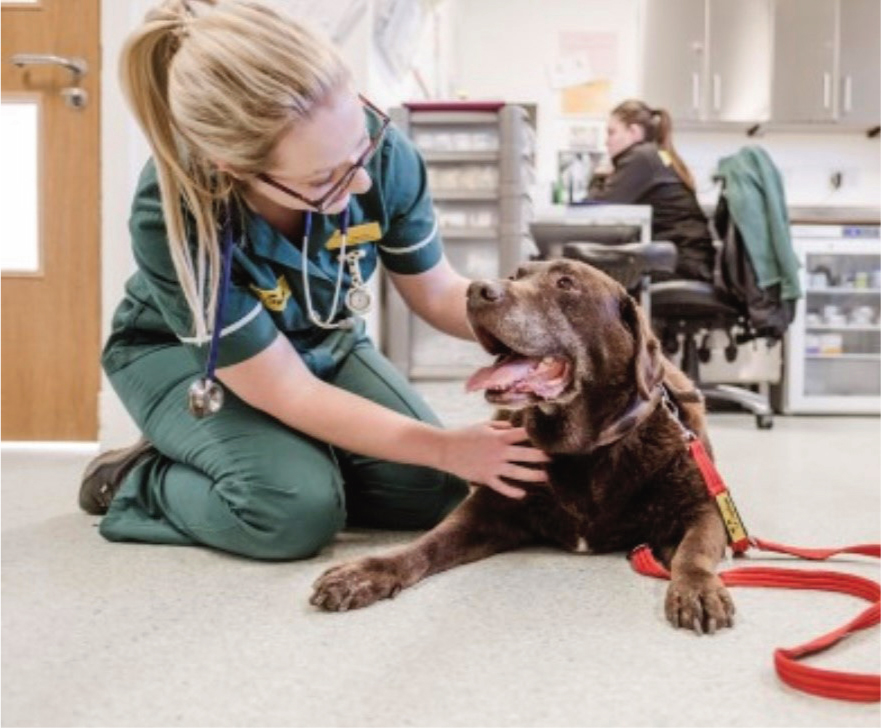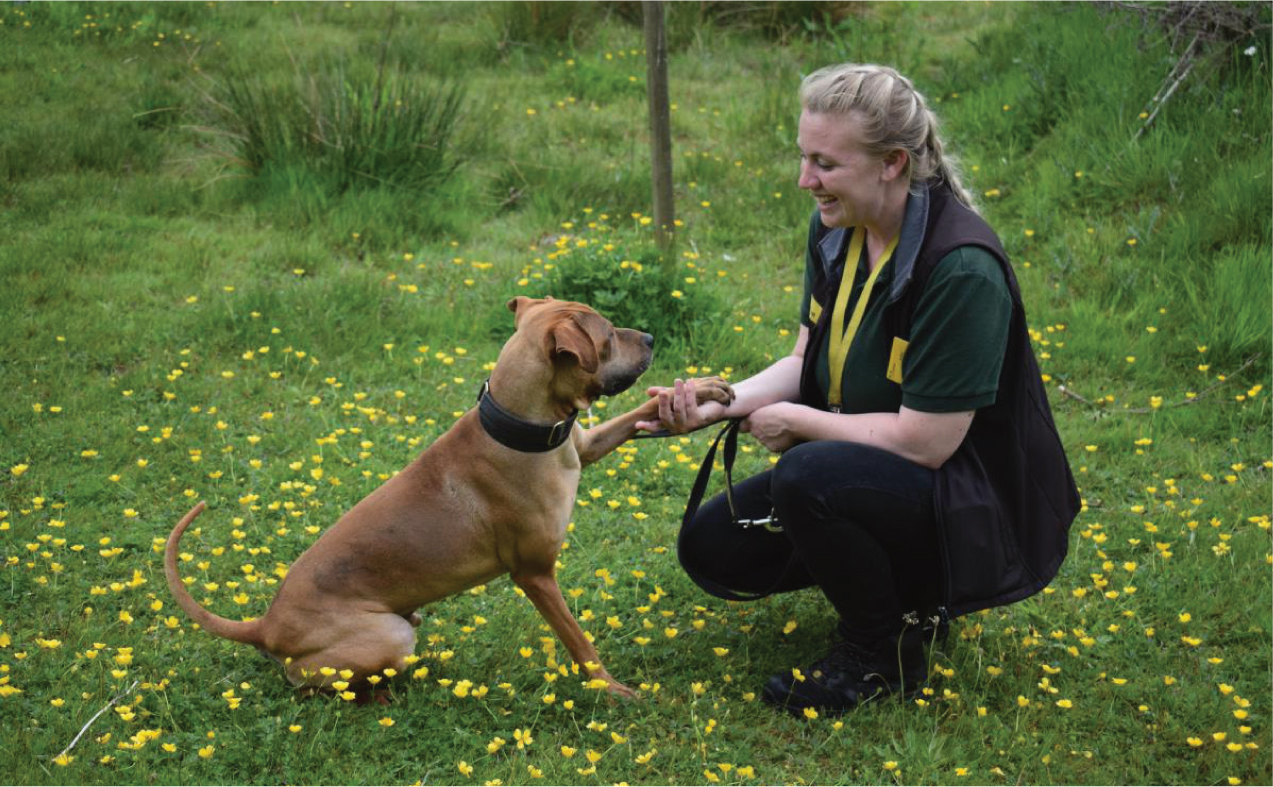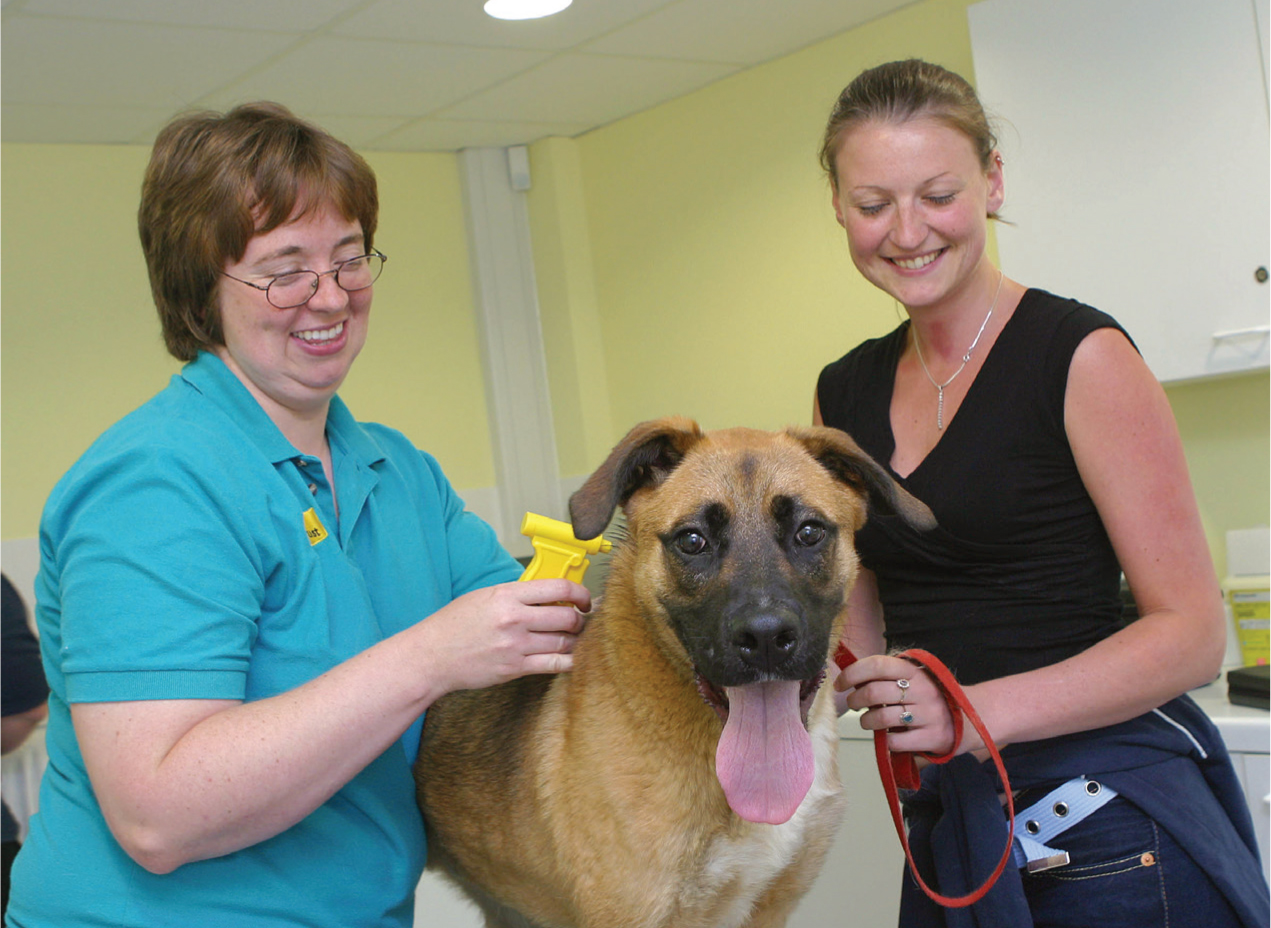Many veterinary nurses will have experienced owners who, whether aware or not, cite dominance theory (also known as pack theory) regarding interactions with their dogs. Historically, positive punishment — introducing such unappealing consequences for behaving in a particular way it is unlikely a dog behaves this way again — has been used to control unwanted dog behaviour (Cooper et al, 2014). This method of dog training has been widely represented across media platforms for many years, helping it become ingrained within much of society as an effective means of controlling behaviour. Elements of human society have also been created around the psychological threat of punishment, with a range of increasing unappealing penalties incurred for engaging in activity society has deemed unlawful. The concept of using punishment to control behaviour is therefore prominent within human experience.
But dogs do not share our human moral code — they simply behave in ways which work out well for them (Figure 1). So why do many owners still use punishing techniques to train their dogs, and how can veterinary nurses influence alternative forms of interactions with dogs that result in significantly improved welfare?

This article will provide evidence for dispelling dominance theory, as well as exploring the basis for human beliefs and attitudes and how these might be modified within a clinical setting.
The rise and fall of dominance theory
‘Dominance’ or ‘pack theory’ describes an ever-popular misbelief that, just as their wolf ancestors lived in hierarchical groups headed by an ‘alpha pair’ enjoying first rights to all valued resources, pet dogs desire to gain ‘top dog’ status — using aggression to gain control over us and things they wish to have. Consequentially, some believe when dogs behave in undesirable ways they are doing so because they are seeking ‘alpha-status’, and this ought to be quashed through owners assuming the role of pack leader, teaching dogs how to behave using methods likely to be found intimidating and aggressive.
The notion arose through observations of captive wolves fighting over food, shelter, resting spaces, and mating opportunities (Mech, 1970). However, the very scientists who published this research have now discredited their findings and apologised. The flawed study followed unrelated individuals within an extremely unnatural, under-resourced environment (Mech, 1999). These wolves' wild counterparts were found to behave very differently, living in social, family groups, demonstrating impressive co-operative, collaborative, communication skills (Mech and Boitani, 2003).
Behaviour is flexible, which means the way dogs, and humans, behave at any given moment will depend on a number of factors including the specific set of circumstances at the time (Mills, 2010). Therefore, an individual will not necessarily behave in the same way within every situation and towards every other being they encounter.
Potentially damaging consequences for dog and owner
‘You just need to show them who's boss, right?’ Wrong! The problem is, the assumption that dogs desire to dominate people, and each other, might fuel another misbelief — that their owners must consequently use aggressive tactics to control dogs' behaviour, resulting in them behaving submissively towards them.
Training methods involving physical force, and/or confrontation such as shouting, staring at/posturing over a dog, or snatching things away from them, are likely to intimidate and create fear (Cooper et al, 2014). The unwanted behaviour might stop, should a dog become frightened about being reprimanded, potentially painfully, in response; however, feeling threatened might lead some dogs to respond aggressively, so interacting in this way can be a very dangerous strategy. The difficulty is, without appropriate education regarding dogs' emotional expression, owners might not be aware they are behaving in ways their dog might find intimidating. They might even have been instructed to do so by other dog owners, or trainers advising dangerously outdated methods. Unfortunately and frustratingly, just like ‘veterinary nurse’, the titles ‘trainer’ and ‘behaviourist’ currently remain legally unprotected.
Driven by a desire for safety, dogs might behave aggressively when feeling unable to escape or avoid a perceived threat, attempting to create distance between this and themselves (Fadel and Pilot, 2017). Fighting risks yourself being harmed, however dogs, a naturally co-operative species, have evolved a broad body language repertoire (Figure 2). Dogs can outwardly express increasing concern about what is happening to and around them, signalling they intend no harm (Zulch, 2017). Therefore, conflict risk may be reduced when people and animals recognise and respond accordingly.

Suppression and spontaneous recovery
Preventing unwanted behaviour through making it unpleasant or painful for a dog to behave that way might appear successful, as the specific behaviour is inhibited. However, a dog that wishes to simultaneously perform the behaviour and avoid the aversive outcome of doing so is likely to feel emotionally conflicted. This risks spontaneous recovery, where supressed behaviour suddenly resurfaces because, at a particular moment in time, desire to perform the behaviour outweighs the competing desire to avoid the expected punishment (Reid, 2007). From the outside perspective, this appears to happen unpredictably, which can be very dangerous where aggressive behaviour is displayed.
To avoid suppression and spontaneous recovery, and to ensure dogs behave in ways we want them to because they are happy and excited, not anxious and frightened, about the consequence of doing so, we can use positive reinforcement. Rather than teach dogs what not to do, by waiting for them to behave in undesirable ways then attempting to ‘correct’ them, establishing then rewarding behaviour in ways dogs find pleasant, enjoyable, and valuable has been evidenced as the most ethical and effective way to teach dogs (Figure 3) (Cooper et al, 2014).

Applying behavioural understanding to veterinary nursing interactions with dogs
Veterinary care provision routinely involves close contact with dogs, including handling them in ways they might find naturally intimidating or frightening (Hedges, 2014). It is therefore advisable for veterinary professionals to learn how to interpret canine communication and respond appropriately to help dogs feel as safe as possible at all times. Encouraging owners to learn how to read their dog's body language and understand how to meet their needs can also help develop their bond and build trusting, empathetic relationships. For example, growling is just one form of communication that tells us a dog is not comfortable with their current situation, for which there could be many reasons including pain or illness, fear and anxiety; it could even be a learned behaviour that the dog has found successful in the past (Farago et al, 2010).
Understanding this and responding appropriately with-in veterinary interactions enables veterinary professionals to take appropriate action to help a dog feel safe, such as removing hands from them immediately, stepping away or moving them further away from or reducing the intensity of whatever they appear worried about. The alternative, chastising or continuing to expose dogs to the perceived threat, risks them feeling so compromised that growling escalates to snapping. Punitive interactions that are experienced as aversive can significantly damage the dog–owner bond, and are likely to worsen a dog's general behaviour overall (Yulevich and Axelrod, 1983), because of growing anxiety in relation to inconsistent owner behaviour — sometimes relaxed, calm, and loving but sometimes unpredictably angry, stern, and agitated.
Examples of applied dominance theory potentially experienced by veterinary nurses
Within clinical settings, veterinary nurses might experience owners using aids designed to assist training by making it unpleasant for dogs to behave in ways that owners find problematic. These might include items such as collars/harnesses designed to apply physical pressure to the body should a dog pull when on lead, applications which smell, taste, sound and/or feel unpleasant delivered to a dog should they bark, or even physical handling or verbal communication that a dog finds uncomfortable.
Encountering these types of interactions can be emotionally challenging for veterinary nurses, however it is important to remember that, just like dogs, people do what works out well for them, people also do what they have been told, shown, and led to believe. Owners might also inadvertently put pressure on their dog to behave in the clinic through embarrassment and desire for them not to create a disturbance, especially when finding it difficult to encourage them to settle.
Being able to withhold judgement is an essential skill for the veterinary nurse, as this can risk damaging client-clinic relations by creating a barrier to encouraging an owner to reflect on a different perspective (Spencer, 2010). It can be helpful to remember that the client has presented their dog to the clinic for support and assistance, and cares deeply for their dog. Punishing methods are not applied out of spite but simply to have their dog behave in ways that they need for a happy life together.
Where do our beliefs come from and why do we hold so dear to them?
Beliefs are essentially ideas that people hold to be ‘true’. These can be based on evidenced, perceived certainties such as scientific laws, for example mathematics and physics, and/or on matters of faith for which little or no factual evidence exists (Crano and Prislin, 2011). People are at liberty to adopt any idea as part of their individual belief system, seeking and evaluating reasons they find reasonable and applicable that support their beliefs, and which the information encountered via various forms of media and the internet, as well as through educational and experiential history and personal relationships, will all feed into.
For example, beliefs may arise through:
- Individual experiences or experimentation
- Accepting cultural and societal norms we are exposed to
- Information received from influential others such as parents and teachers.
For some, belief may be consolidated through lack of awareness or access to alternative information, however others might hold dear to beliefs because they have tried unsuccessfully to confront them in the past, not been able to find sufficient evidence to support the contrary, for example, and feel demoralised or intimidated by doing so again (Baron, 2000).
Once a belief is accepted as true, people naturally become sensitive to information that they perceive supports it, potentially even without realising and generally without questioning it — because it is easier, and more reinforcing, to continue believing what they do (Lord et al, 1979). An example arising from the use of positive punishment to control dog behaviour is that it is often successful — initially at least — in appearing to stop a dog behaving in an undesired manner. From the owner's perspective, therefore, they might be more likely to ‘believe in’ the effectiveness of punishment and use it again in the future.
The risks associated with questioning others' beliefs
When professionals simply point out what needs to be done people might become defensive, embarrassed, and might be even more likely to cling to what they believe. Feelings of invalidation, confrontation, disrespect, shame, and in some cases potentially guilt, might consequentially translate into people arguing, resisting, becoming aggressive and ultimately disengaging.
How can veterinary professionals influence owners' beliefs about dog welfare?
The Transtheoretical Model of Change (Diclemete et al, 1991) acknowledges that humans sit within a ‘precontemplation stage’ of belief in which they have no conscious intention of entertaining any perspective other than their current standpoint; and that, in this stage, they tend to avoid information that contradicts their beliefs. However, it is suggested that awareness and interest may be sparked by information from sources perceived as credible, which highlight where certain beliefs might be blocking access to important personal goals (Miller and Rollnick, 2013).
Despite the importance of a recognised reliable source, evidence that demonstrates client understanding of the knowledge and skillset of the veterinary nurse qualification, and appreciation for veterinary nurse-delivered information, remains sparse. It is also acknowledged that simply being given facts does not necessarily result in changed beliefs and behaviour, therefore professionals benefit by helping clients own this change for themselves (Deci and Ryan, 1985). This is done by establishing empathetic rapport with the client — trying to understand where their internal frame of reference sits, acknowledging why they believe what they do (Figure 4). Veterinary professionals can then provide a client with meaningful rationale for their approach, however allowing them time to reflect and accept it in their own time.

The following ways have been evidenced as strengthening one's ability and confidence to accept a new perspective and behave in accordance with it (Bandura, 1977), and therefore, may be used by veterinary nurses to positively influence client's beliefs:
- Role modelling — by demonstrating successful positive interactions with dogs through considerate, appropriate handling within the clinic
- Personal achievements — by providing guidance for clients on how to practically and appropriately engage with their dogs to achieve desired behavioural outcomes
- Evaluative critique from trusted sources — by providing owners with meaningful encouragement and feedback on their interactions with their dogs while present in clinic
- Positive physiological and emotional states — by creating comfortable clinical settings in which clients may feel relaxed, calm, understood, and able to freely communicate about their concerns for their dog.
Keeping abreast of advancements in canine behavioural science also ensures veterinary nurses are up to date with scientific knowledge and prepared to practically apply this within clinical settings; educating owners appropriately too.
Conclusions
Veterinary nurses might encounter owners who subscribe to a now disproved misconception that dogs naturally desire to dominate us. This unsubstantiated belief might drive owners to interact with their dogs in ways that are potentially damaging to welfare and the dog–owner relationship, however directly challenging this belief risks alienating the owners and dogs veterinary professionals seek to help.
Instead, veterinary nurses can create positive rapport with clients through building empathetic, understanding and non-judgemental relationships in which clients do not feel confronted, so that when they then offer alternative viewpoints a client may feel encouraged to listen to the information being shared in a receptive manner. Demonstrating an evidenced-based style of interacting with dogs, which dogs find immediately rewarding and enjoyable, and which encourage dogs to feel safe within the clinical setting, provides owners with visual evidence to support the verbal information that a veterinary nurse might then share. A client might then try this approach in future because they have witnessed it as successful and because they have not simply been told their personal approach is ‘wrong’. The client is therefore guided into behaving in a desired manner and can then be reinforced — with positive feedback and encouragement — for doing so.
The more that can be done to highlight the ever-increasing knowledge-base and practical skillset of the veterinary nurse's role for the client, the greater the influential power of the profession.
KEY POINTS
- The scientists who proposed dominance hierarchies in dogs have since discredited their own research as invalid.
- A dog that is suppressing behaviour because they anticipate punishment might suddenly behave in the unwanted way because of their desire to engage in the behaviour overriding their desire to avoid the expected punishment at that particular moment in time.
- Reward-based interactions and training methods strengthen the dog–owner bond and have been shown to be most effective and welfare-driven.
- Humans can feel threatened and antagonised should their long-held beliefs be directly challenged, which can be damaging for relationships with potentially influential others.
- Acknowledging another's beliefs empathetically while presenting an alternative viewpoint can be influential in delivering a new perspective without appearing


